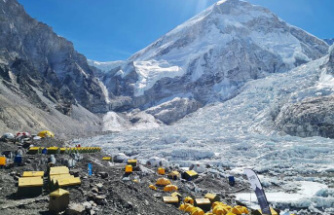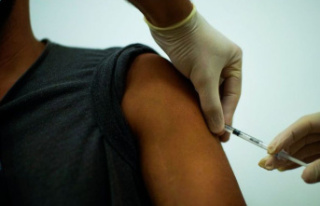In the heart of Thingvellir National Park, on the edge of one of the largest Icelandic lakes, these corridors of submerged rocks form deep cavities - one of which exceeds 60 meters - nestled between the two continents, which move away from about two centimeters each year.
Orange reflections mingle with several shades of blue. Beige sand and phosphorescent green seaweed complete the color palette.
"It looked like hair," notes Camille Lund, a Franco-American tourist.
The fault and the entire surrounding valley rest on the Mid-Atlantic Ridge which crosses Iceland from side to side, making it one of the most active volcanic areas in the world.
Formed by an earthquake more than two centuries ago caused by this tectonic drift, the limpid waters of Silfra come from the melting of Langjökull, a nearby glacier.
Taking several decades, it travels along a tunnel of underground aquifers of about fifty kilometers.
"This filtration system through the volcanic rocks (...) gives us super clear water," Thomas Gov, a diving instructor from Toulouse in France, told AFP.
- 2 to 3 degrees -
Under water, visibility can thus exceed 100 meters and the spectacle combining light and darkness is hypnotic.
"When we entered the water, it was...", interrupts captivated Brynjólfur Bragason, one of the few Icelanders among foreign tourists. “Incredible”, completes his wife Hildur Orradóttir.
Before taking a dip, you have to put on a whole range of gear: waterproof suit, diving gloves, hood, mask, snorkel and of course flippers.
The equipment allows you to stay dry and float peacefully on the surface in water between 2 and 3°C all year round.
Only part of the face and hands are wet.
"It feels right away on the lips: they go numb after a while and it feels like tingling," notes Ian Zavatti, 13, alongside his father.
"The water gets into our hands but it's not that bad, it's generally bearable," adds the New York teenager.
Snorkelling or snorkeling is the most popular activity, but the most seasoned and certified can dive with a bottle up to 18 meters deep.












